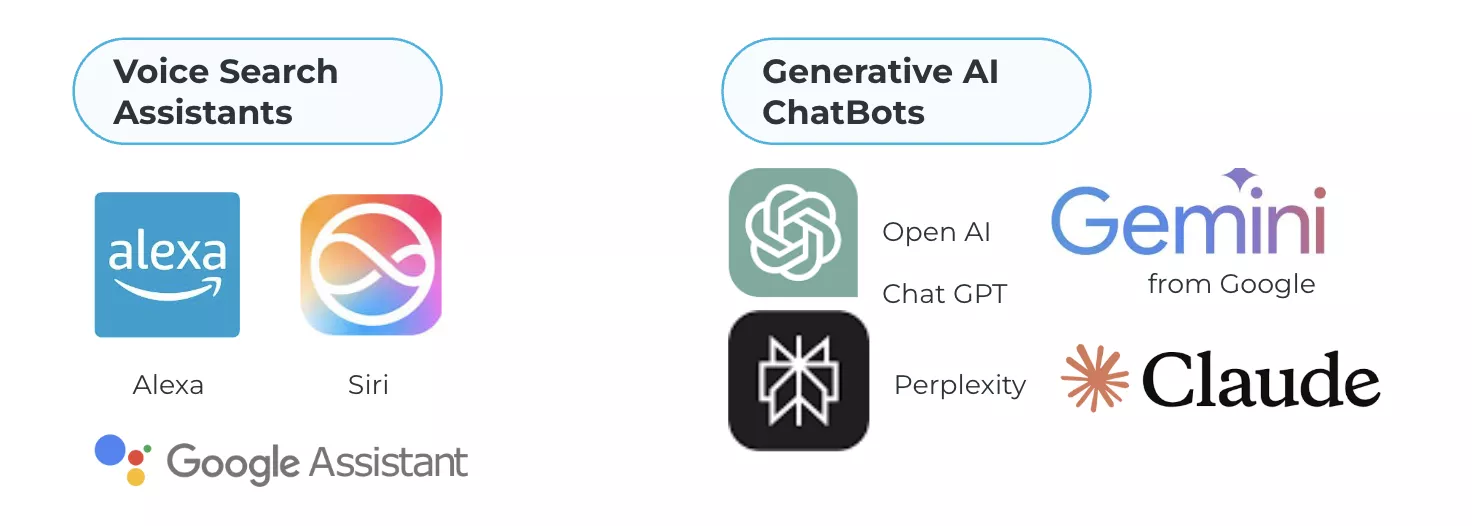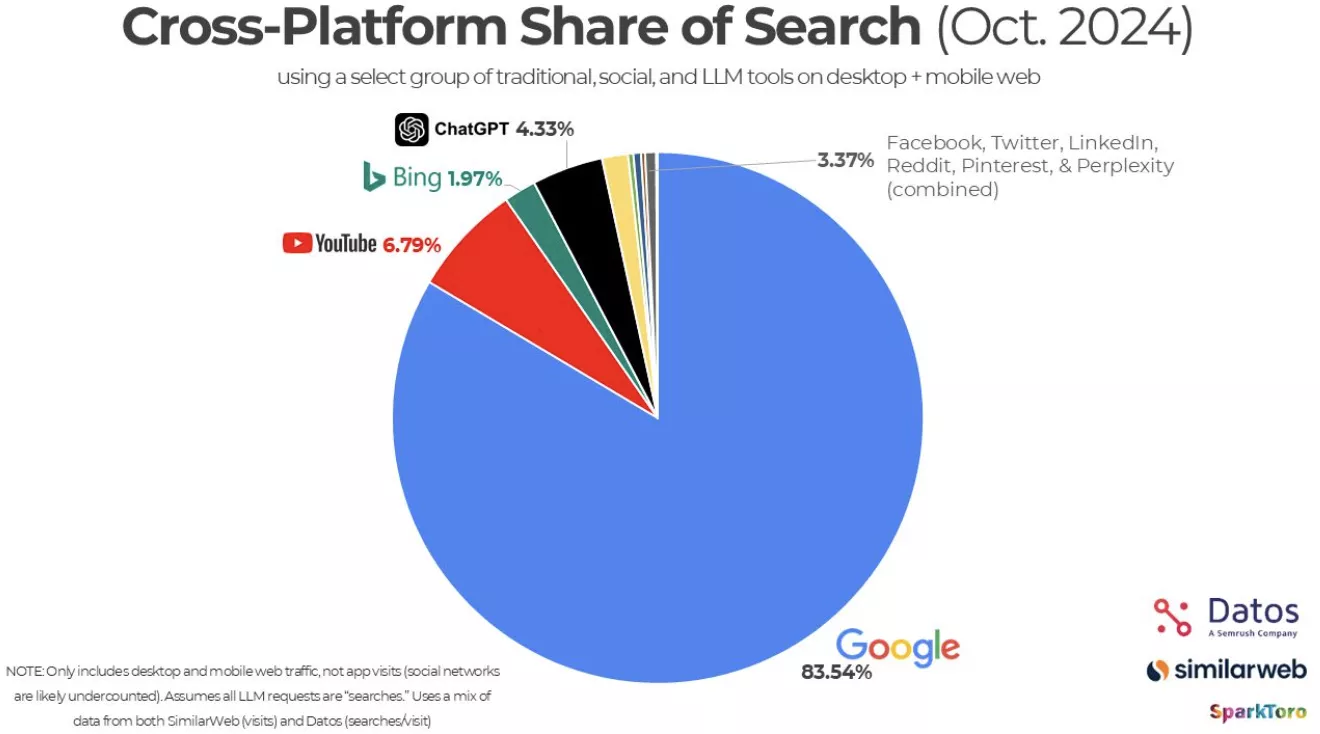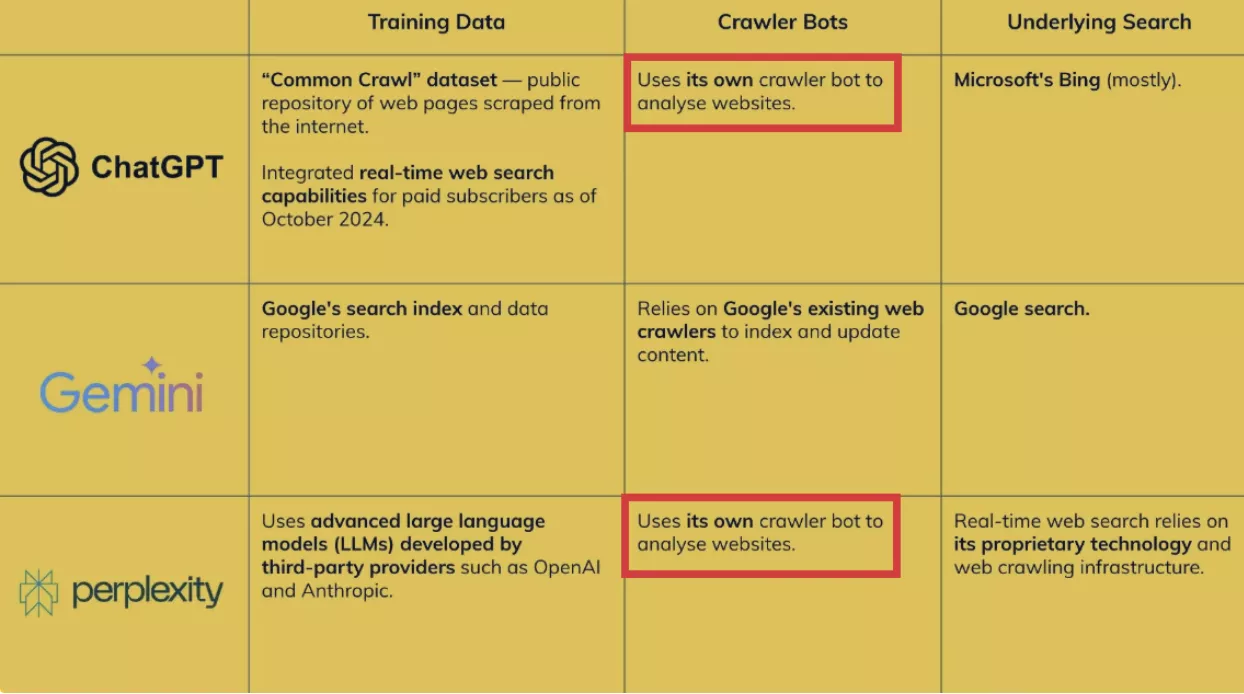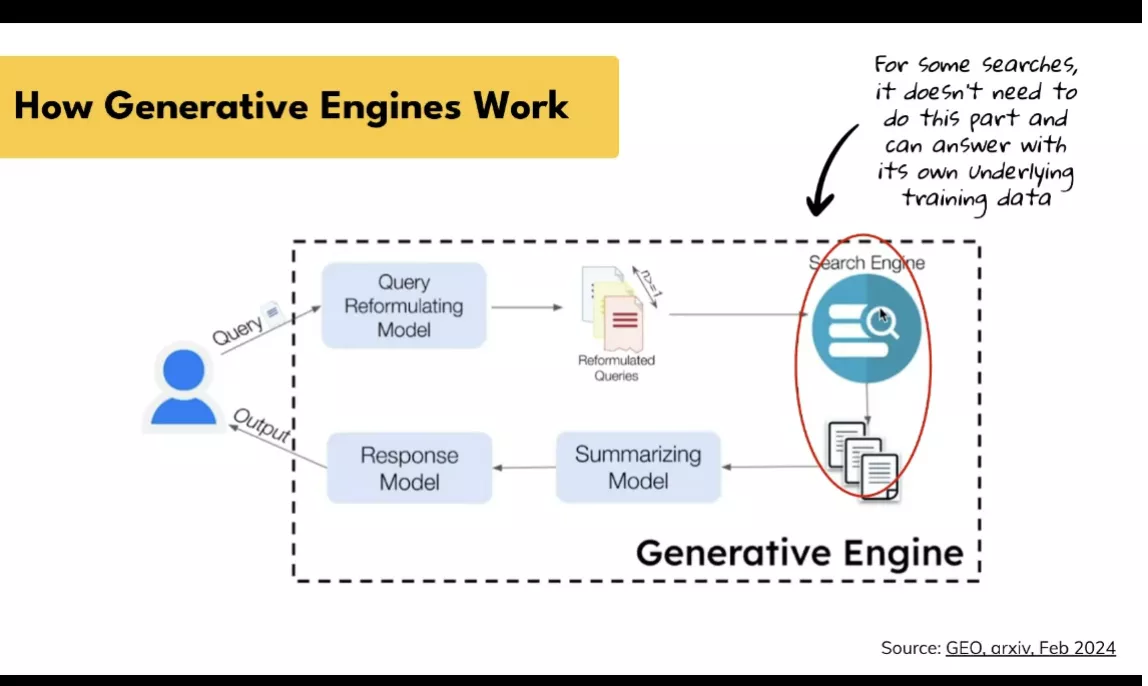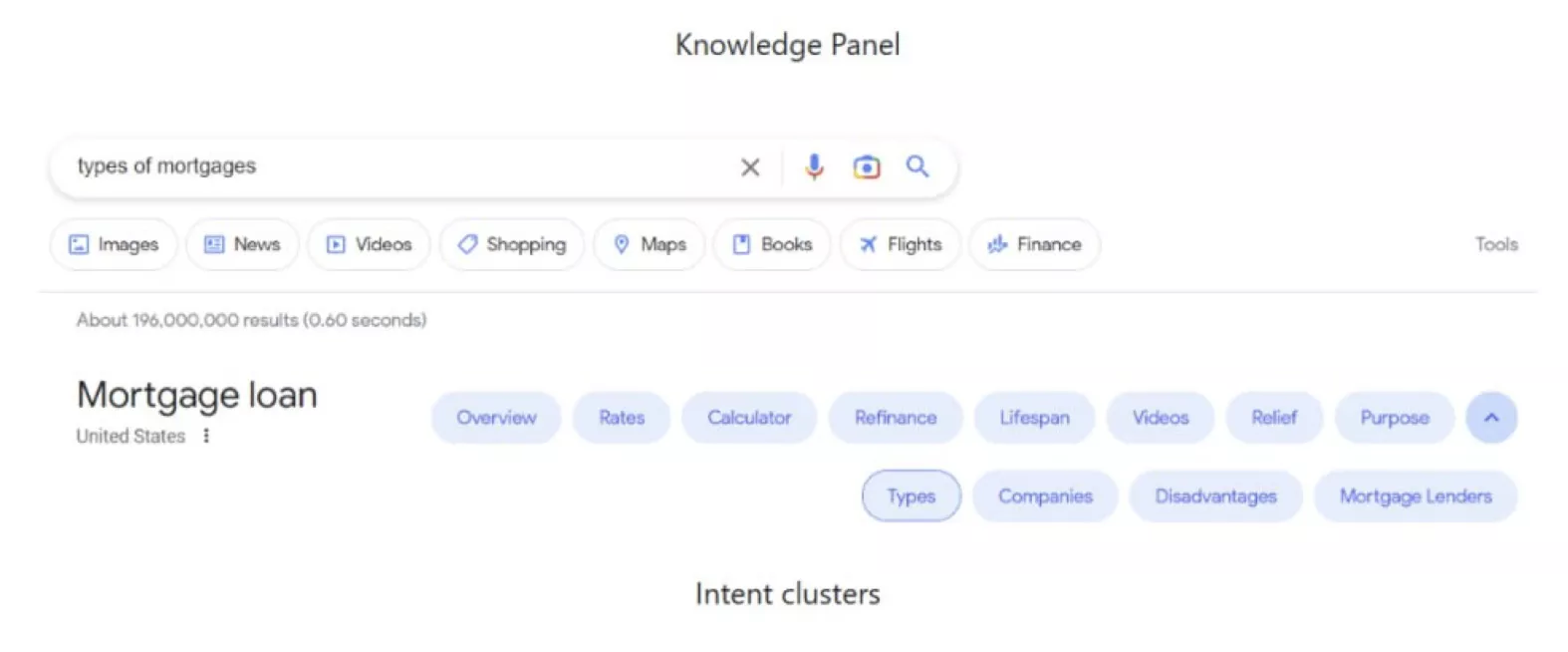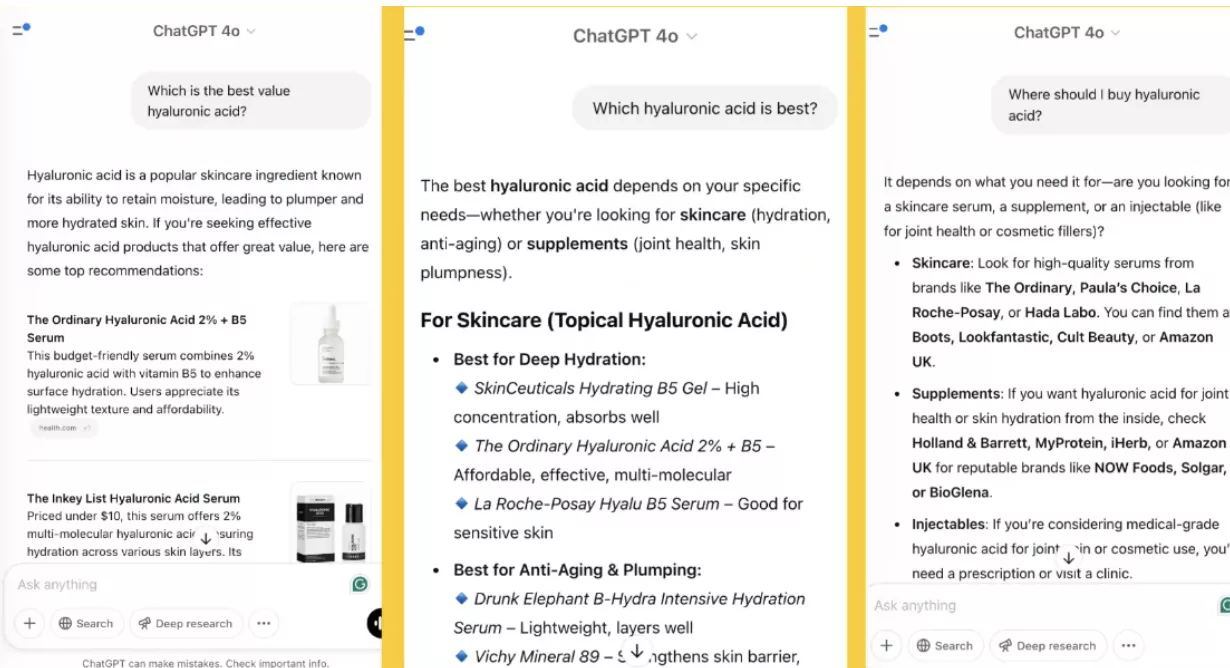Welcome to 2025, where people ask AI for answers and expect immediate brilliance. Traditional SEO? Still important. But now we’ve got a new acronym trying to steal the spotlight — GEO, or Generative Engine Optimization.
While SEO is out here optimizing for search engines like Google (the old-school librarians of the internet), GEO is whispering sweet nothings to AI assistants like ChatGPT, Perplexity and Gemini — the overachieving, people-pleasing valedictorians of the AI world.
GEO is SEO’s younger, cooler cousin who doesn’t just want to rank — it wants to answer. The goal? Get your brand mentioned when someone asks an AI assistant a question, like: “What’s the best CRM for beauty salons?” You want that assistant to say, “Oh, honey, it’s your brand — obviously.”
With an estimated 400 million ChatGPT users and 37.5 million daily search queries processed by generative AI platforms, this isn’t just some tech nerd fantasy — it’s the digital marketing reality sliding into your DMs. Let’s break down what GEO optimization actually means, how it works and why your business should care (before your competitors do).
What Is Generative Engine Optimization?
Generative Engine Optimization (GEO) is the art of sweet-talking AI models into mentioning your brand when people ask them questions. It’s like SEO’s Gen Z offspring — less concerned with page rankings and more obsessed with getting name-dropped in conversation.
In practice, GEO means structuring your content so AI assistants like ChatGPT, Claude or Gemini can easily digest it, understand it and then regurgitate it when someone asks a relevant question. The goal is to make your brand the obvious answer when someone asks an AI, “What’s the best project management tool for remote teams?” or “Which sustainable clothing brands don’t charge a small fortune?”
Unlike traditional SEO where you’re trying to impress Google’s algorithms, GEO is about making sure the robots think you’re cool enough to recommend to their human friends. It’s like getting the popular kid to mention your name at the lunch table — suddenly everyone knows who you are.
GEO by Any Other Name: Alternatives Worth Knowing
GEO isn’t the only term floating around for this concept. Here’s the alphabet soup of alternatives you might encounter:
- AEO – Answer Engine Optimization: For people who like to be extremely literal about what they’re actually doing
- LLMO – Large Language Model Optimization: The term that screams “I have a PhD and want you to know it”
- AIO – AI Optimization: The laziest possible acronym that still gets the point across
- GenAI SEO – Generative AI SEO: For those who can’t let go of SEO but still want to sound cutting-edge
- LLM SEO – SEO for Large Language Models: The compromise option for when marketing meets engineering and nobody wins.
They all basically mean the same thing — making sure robots mention your brand when humans ask them questions. But saying “GEO” makes you sound like you actually know what you’re talking about at digital marketing happy hours, so we’re sticking with that.
The Popular Kids: Generative Engines
Before we jump into strategies, let’s break down the main types of AI Answer Engines you’re trying to impress — these are the robots you need to seduce with your content:
1. AI-Powered Voice and Smart Assistants
These are the talking heads of the AI world — the ones you yell at when your hands are covered in dish soap:
- Siri (Apple) – The OG who still struggles with basic questions after 13 years
- Alexa (Amazon) – Primarily exists to accidentally order stuff when you're just talking about it
- Google Assistant – Knows everything about you but still can’t understand what you mean by “call Mom”
They’re designed to help you find stuff, control your smart home or settle arguments during dinner.
2. Generative AI Bots
These are the cool kids who show their work — and sometimes their sources:
- ChatGPT (OpenAI) – The one everyone knows; occasionally makes things up with complete confidence
- Perplexity – The one that actually cites its sources like a responsible student
- Gemini (Google) – The rebranded one trying very hard to be taken seriously
- Claude (Anthropic) – The slightly pretentious one that writes like an English professor
- Copilot (Microsoft) – The follower that’s basically ChatGPT wearing a Microsoft T-shirt
Each platform operates differently, which matters when you’re trying to get noticed:
|
Mode |
What It Actually Does |
The Bots That Do It |
|
Classic Chat |
Makes stuff up confidently from training data without checking |
ChatGPT, Claude, Gemini, Copilot |
|
Internet Search |
Actually Googles stuff for you but pretends it’s being smart |
ChatGPT (Search), Gemini, Perplexity |
|
Reasoning |
Takes forever but gives better answers for hard questions |
GPT, Claude, Gemini, Perplexity |
|
Deep Research |
The AI equivalent of grabbing coffee and hitting the library for hours |
ChatGPT, Gemini, Perplexity |
The line between search engine and chatty know-it-all is blurring fast. So if you want your business to get mentioned when someone starts asking questions, you need to start thinking like a bot. That’s where GEO comes in.
GEO or Go Home: The Importance of GEO
Let’s set the scene with a few numbers that’ll make you want to immediately update your LinkedIn profile with “GEO Specialist”:
AI Search: Not a Niche Anymore
- ChatGPT boasts around 400 million users. That's more than the entire population of the United States, folks.
- ChatGPT handles 37.5 million search queries per day. Google? Try 14 billion — the digital equivalent of a fast-approaching tsunami.
- According to Rand Fishkin’s LinkedIn analysis, ChatGPT’s slice of the search pie is already comparable to YouTube’s — and YouTube has been around since the Jurassic period of the internet.
Source: Rand Fishkin, Linkedin
So yeah, Google’s still king. But the fact that ChatGPT is even on the scoreboard this fast? That’s not just growth — it’s a warning shot across your digital marketing bow.
No Links? No Problem (Actually, Big Problem)
Here’s the awkward truth: Most users don’t enable Search mode in ChatGPT, which means no links and no traffic for you. It’s just pulling from its static training data and confidently making stuff up.
However, some prompts (like “What’s the best project management tool for creative agencies?”) automatically trigger Search mode, even if the user didn't turn it on. That’s your golden ticket to visibility.
The Perplexity Advantage
Unlike ChatGPT, Perplexity is link-happy. Every answer comes with a tidy list of sources — which means your content has a fighting chance of being cited and actually driving traffic.
Meanwhile, Claude is like that friend who tells your joke at a party but doesn’t give you credit. It rarely shows sources, even when it’s clearly using them.
The bottom line? If you’re not optimizing for AI assistants, you’re not just late to the party — you’re not even on the guest list.
Inside the AI Hive Mind: How Different AI Platforms Work
GPT and Perplexity:
Have their own crawlers.
Do not always use search engines.
If their own data is sufficient, they use it.
GEO vs. SEO: What’s the Difference?
SEO and GEO aren't enemies. They’re more like two wildly different siblings — one’s still trying to impress Google, and the other’s cozying up to ChatGPT. Let’s meet the fam:
Traditional SEO: The Responsible Older Sibling
SEO is all about getting your website to rank in search engines like Google. It relies on a fairly predictable flow:
- Crawling – Googlebot scans your site via links
- Indexing – Content gets added to the search database
- Ranking – Google decides where you show up based on keywords, backlinks, user behavior and technical performance
Your main tools of the trade?
- Targeted keywords
- Backlinks from websites
- Content that’s valuable but also stuffed with just the right amount of keywords
- Technical mumbo-jumbo like site speed and mobile optimization
GEO: The Cool Gen Z Sibling With Purple Hair
GEO is about getting your content mentioned by AI assistants like ChatGPT or Perplexity. These models don’t use a search result list — they generate answers on the fly while looking thoughtfully into the distance.
How it works:
- Content ingestion – AI models are trained on massive datasets from the public web
- Entity recognition – They identify key concepts and relationships in your content
- Relevance scoring – When someone asks a question, the AI decides which sources are trustworthy
- Answer generation – If your content is clear, factual and unique, you might get quoted
Here’s the GEO vs. SEO cage match breakdown:
|
What We’re Talking About |
SEO |
GEO |
|
Brand mentions |
“Meh, give me backlinks instead” |
“Inject them directly into my veins” |
|
Keywords |
Short, volume-based |
Long, conversational questions |
|
Query length |
“best shoes” |
“What are the most comfortable shoes for someone with plantar fasciitis who stands all day?” |
|
Sources |
Google’s index |
Forums, GitHub, Reddit, that weird blog from 2015 |
|
Content style |
Keyword-stuffed but make it look natural |
Actually helpful answers to real questions |
|
Success measure |
Page 1 ranking |
Getting name-dropped by ChatGPT |
SEO gets you on the list. GEO gets you in the answer. And in 2025, you probably need both if you want people to actually find you.
GEO Mechanics 101: How to Become a Generative Engine Favorite
To win at GEO, you need to understand what’s happening under the hood of these AI systems. Let’s demystify the robot brains:
LLMs: Autocomplete With an Advanced Degree
Think of a Large Language Model (LLM) as autocomplete on caffeine — the souped-up version of that texting feature that guesses your next word. But instead of just suggesting “on my way,” it can write a novel, summarize a research paper or tell you what CRM to use in under three seconds.
Here’s how it really works:
- It doesn’t “think.” LLMs don’t understand the world like humans. They’re just insanely good at predicting the next word in a sentence based on patterns in text.
- It breaks everything into tiny chunks called tokens (sometimes fragments of words).
- It uses context to predict what comes next, considering the whole conversation.
- It’s trained on massive amounts of text — books, websites, articles, forums — learning patterns and associations.
Imagine it like this: ChatGPT doesn’t know that Paris is a city. It knows that “Paris” often comes after “trip to” and before “is so expensive.” So when you ask it a question, it’s not searching a database — it’s predicting a really good-sounding answer based on everything it’s read.
Learn more about how LLMs work.
The Entity Game: It’s All About Who You Know
When AI answers questions, it’s trying to connect dots between entities — the concepts, brands, products and relationships in your content.
This means your brand needs to be linked to relevant entities in your industry. If you sell productivity software, your brand should be connected to concepts like “remote work,” “team collaboration” and “project tracking” across the web.
The more your content clearly establishes these connections, the more likely an AI will mention you when someone asks about those topics.
The best example of entities in search results is intent clusters.
Dataset Drama: Why Reddit Matters More Than You Think
Here’s where it gets weird: No one outside these AI companies really knows exactly what went into training these models. But we do know they’ve ingested:
- Forums like Reddit and Quora
- Public websites and articles
- Technical documentation
- Academic papers
- That embarrassing blog post you wrote in 2012
Unless they’re actively searching the web in real-time (which most users don’t enable), they’re pulling from their static training data. This means:
- Content popularity matters — widely referenced sources get more weight
- Public discussions about your brand influence how AI sees you
- User-generated content platforms are disproportionately important
The bottom line? If your brand only gets talked about in locked-down Slack groups or private Discords, LLMs don’t see it. You’re invisible to the robots, and therefore invisible to the humans asking them questions.
Key GEO Benefits: Less Guessing, More Getting Noticed
Besides “looking super tech-savvy in meetings,” here’s why you should care about GEO:
Enhanced Brand Visibility (When It Actually Matters)
- Gets your brand name-dropped when people are actively seeking solutions
- Creates the impression you’re an authority (even if you’re just good at optimization)
- Builds trust through third-party recommendations (because people trust AI more than your ads)
Targeted Traffic That Actually Converts
- Attracts users who are asking specific questions your product solves
- Skips the “awareness” phase and goes straight to consideration
- Cultivates leads with higher purchase intent than random Google searchers
Example: TheOrdinary.com — a DTC skincare brand that shows up beautifully in GPT answers.
Why? Because they’ve built strong content tied to specific product use cases.
If you’re a monobrand store, your only play is targeted content that connects products to real-world problems. Think:
- “Best face serum for hormonal acne”
- “Gentle cleanser for sensitive skin, dermatologist-approved”
The tighter the context, the better the visibility.
The First-Mover Advantage
- Establishes your brand before competitors catch on
- Creates momentum that’s hard to displace later
- Positions you as an innovator rather than a follower
More Mileage From Existing Content
- Extends the reach of content you’ve already created
- Creates multiple paths for discovery beyond Google
- Makes your content marketing work double-duty
According to early adopters (who love nothing more than telling everyone they were early adopters), businesses implementing GEO strategies are already seeing 5%–10% of organic leads coming from AI platforms. It’s not going to replace your entire marketing strategy overnight, but it’s definitely worth more attention than your TikTok strategy.
GEO Growing Pains
Before you go all-in on GEO, let’s talk about why it might make you want to pull your hair out:
The Black Box Problem
- Nobody (not even the people who built them) fully understands what’s in the training data
- Zero transparency into why one source gets cited over another
- No clear feedback mechanism when your content gets ignored
This is like SEO in 1998, when the entire strategy was “use more keywords and pray for the best.”
Everything Changes Every 15 Minutes
- AI models update constantly, sometimes changing how they evaluate content
- New platforms emerge with their own quirky requirements
- Best practices today might be useless tomorrow
Just when you think you’ve figured it out, OpenAI drops GPT-5, and the whole game changes.
Measuring Success? Good Luck With That
- Few dedicated analytics tools for tracking AI mentions
- Hard to attribute traffic when links aren't included
- Difficult to quantify the impact of brand mentions
You might do everything right and still have no idea if it’s working. Fun!
Technical Nightmares
- JavaScript-heavy sites are invisible to most AI crawlers
- Different bots have different access requirements
- Your beautifully rendered React site? The bots see a blank page.
Platform Roulette
- ChatGPT might love you, but Claude pretends you don’t exist
- Some platforms cite sources; others just steal your content
- What works for one assistant often fails for another
Most Effective GEO Strategies (Or, How to Become an AI Darling)
Content Optimization
If your content sounds like a robot wrote it in 2010, congratulations — you’re invisible. Instead:
- Match intent, not keywords: AI wants answers, not buzzword bingo. Be helpful, not desperate.
- Talk like a human: People don’t say “synergize strategic objectives” — they ask, “How do I stop churn?”
- Structure for goldfish brains: Clear headings, short paragraphs, bullets. Nobody’s reading your 900-word wall of text.
- Update or die: Outdated stats scream “I stopped caring in 2021.” Keep it fresh.
Technical Optimization
Even the smartest content needs help getting noticed. Cue the nerd stuff:
- Use Schema.org markup: Like leaving breadcrumbs for AI Hansel and Gretel.
- Create an llm.txt file: It’s like a sitemap, but for robots with PhDs.
- Let the bots in: GPTBot, ClaudeBot, BingBot — don’t ghost them. Check your robots.txt.
- Optimize for Bing (yes, really): OpenAI uses Bing data. Bing is cool now. Sort of.
Brand Visibility Enhancement
You can’t be the main character if no one’s talking about you:
- More mentions = more magic: Get cited on third-party sites like your brand depends on it (because it does).
- Get chatty in UGC spaces: Forums, Reddit, community blogs — the messier, the better.
- Build “best of” lists: If you’re not making lists, you’re not making the cut.
- Flex your wins: Awards, badges, third-party love — humblebrag like it’s your job.
Platform-Specific Tactics
Because what works on ChatGPT won’t cut it with Perplexity:
- ChatGPT: Clear, cited, structured. Think high school debate champ energy.
- Perplexity: Be linkable and quotable. Sound like an expert, not a fan.
- Voice assistants: Snippets, summaries and direct answers. No fluff, just facts.
Practical GEO Tips
Content Creation Tips
- FAQ it up: Real questions from real humans. The more awkwardly phrased, the better.
- Benefits > features: No one cares that it’s “AI-powered.” Tell them what it fixes.
- Proof or GTFO: Add stats, testimonials, case studies — your receipts matter.
- Entity associations: Tie your brand to niche terms and use cases like it’s your SEO soulmate.
Technical Tips
- Server-side rendering: JavaScript-only = AI blind spot. Render it like you mean it.
- Schema everything: FAQ, How-To, Product — give AI a cheat sheet.
- Speed it up: Slow sites are where good content goes to die.
- Mobile-first: If it’s not readable on a phone, it’s not readable. Period.
Brand Strategy Tips
- Niche down: Own specific, high-intent queries. “Accounting SaaS for freelancers,” not “accounting.”
- Go deep: Surface-level content is SEO wallpaper. Make it substantial.
- Be consistent: From your site to your socials to your sock tags — same voice, same message.
- Make friends: Influencers, trade pubs, forums — your visibility network.
Measurement Tips
- Track branded queries: If people are Googling you by name, you’re winning.
- Referral tracking: See who’s sending traffic from AI — if they’re linking, you should be thanking.
- Brand mentions: Use tools to spy on your reputation. (Legally, of course.)
- Test the AI waters: Ask ChatGPT if it knows you. If not, you’ve got work to do.
Common GEO Mistakes (Please Stop Doing These)
Content Oopsies
- Keyword stuffing: Still doing this? What is this, 2006?
- Only optimizing your site: You need backlinks, not a shrine.
- Paper-thin content: No insights, no value, no mentions.
- Shameless promotion: Save the hype for Shark Tank. Stick to facts.
Technical Facepalms
- Blocking bots: Don’t lock the front door on GPTBot.
- No structured data: Schema is the Rosetta Stone of GEO.
- JavaScript jail: AI can’t read what it can’t see.
- One long blob of text: Break it up or it won’t get picked up.
Strategy Sins
- Platform-blindness: What works on Perplexity won’t impress Alexa.
- Abandoning SEO: GEO = friend, not enemy.
- Short-term hacks: Good content ages like wine. Bad hacks? Like milk.
- Set-it-and-forget-it: AI evolves faster than TikTok trends. Stay agile.
How to Measure GEO Performance
Direct Metrics
- AI platform referrals: If they’re linking, they’re listening.
- Brand mentions in AI results: Name drop = dopamine.
- Share of voice: More mentions than competitors? You’re doing it right.
- Conversion tracking: If people click → land → buy, congrats — GEO is working.
Indirect Metrics
- Branded search spikes: Means people are looking for you. Not just “best CRM” — but your CRM.
- Direct traffic jumps: A surge means your name’s out there.
- Social chatter: If your brand pops up in tweets about AI advice, take the win.
- Customer interviews: Ask, “Where did you hear about us?” The answer might be ChatGPT.
Testing Tips
- Query across platforms: Check your mentions on Claude, ChatGPT, Perplexity, etc.
- Spy on your rivals: If they’re getting cited and you’re not … awkward.
- Before/after comparisons: Did visibility jump post-GEO? That’s your proof.
- A/B your content: Try different formats and see which gets picked up more.
The Future of GEO (It’s Getting Real Out There)
Trends to Watch
- Vertical LLMs: Niche AIs trained in your industry — it’s happening.
- Better attribution: You’ll soon know when AI sends you traffic (finally).
- Voice-first search: “Hey Siri, who’s the best email platform?” Better be you.
- Multimodal content: Video, audio, images — if it’s not all in play, you’re falling behind.
What’s Coming
- SEO and AI merging: It’s all just “finding stuff” now.
- Better analytics tools: GEO dashboards are on their way.
- Standardized AI protocols: Less guesswork, more frameworks.
- Content quality > quantity: Mediocre content won’t make the cut.
Strategic Takeaways
- Early birds win visibility: First in = hard to dethrone.
- Your content better slap: Lazy stuff won’t cut it.
- Think platform-agnostic: Be everywhere, not just on your blog.
- User intent rules: If you’re not answering actual questions, you’re irrelevant.
Need help getting started with generative search engine optimization? Contact Netpeak.
FAQ
How long does it take to see results from Generative Engine Optimization?
You’ll typically start noticing some traction within 1 to 3 months, especially if your content fills a noticeable information gap and checks the quality boxes. Unlike traditional SEO — which can take up to 6 months to bear fruit — GEO can move faster, especially if AI assistants spot and surface your fresh, helpful content. That said, building a consistent presence across multiple AI platforms is more of a long game — plan for 6 to 12 months of strategic effort.
Is GEO relevant to all businesses and industries?
It’s useful for most, but not equally. B2B and knowledge-based businesses tend to see stronger results since they naturally lend themselves to question-based discovery — and AI loves answering questions. Local businesses can get a boost with geo-targeted content, and complex products or services usually benefit more than simple commodities. If your offering needs explaining, GEO is your friend. If it sells itself, you’ll need to get creative.
What tools and technologies help with GEO?
To implement GEO well, you’ll likely lean on a few different types of tools. For structured data, Schema App and Google’s Structured Data Markup Helper are great for generating the markup AI craves. Content analysis platforms like MarketMuse, Clearscope or Frase help optimize for relevance and authority. For tracking brand mentions, tools like Brandwatch or Mention will keep you in the loop. And for research, AnswerThePublic and AlsoAsked are perfect for identifying real-world questions to target. To check how accessible your site is to AI bots, Screaming Frog (with custom AI bot user agents) is your go-to.
How does GEO relate to traditional SEO?
GEO and SEO are basically digital siblings — different personalities, same goal: helping people (and now robots) find your content. GEO emphasizes natural language, question-focused content and third-party presence, while SEO tends to lean harder on keywords and link-building. But the fundamentals — clean structure, clear answers, helpful content — overlap big time. When done right, GEO actually enhances SEO by broadening your visibility and increasing the chances that AI and search engines both find and love you.
How much does it cost to implement GEO?
That depends on where you’re starting. If you already have a content team and some infrastructure, you might spend between $3,000 and $10,000 to get the strategy and initial implementation off the ground. For businesses starting from scratch, a comprehensive rollout — including content creation, technical fixes and measurement — could run anywhere from $15,000 to $30,000. Most companies fold GEO into their broader SEO budget, allocating about 20 to 30 percent to AI-specific initiatives. Ongoing maintenance typically takes 10 to 20 hours per month, depending on how many platforms and content pieces you’re managing.
Related Articles
Display Advertising Effectiveness Analysis: A Comprehensive Approach to Measuring Its Impact
In this article, I will explain why you shouldn’t underestimate display advertising and how to analyze its impact using Google Analytics 4
Generative Engine Optimization: What Businesses Get From Ranking in SearchGPT
Companies that master SearchGPT SEO and generative engine optimization will capture high-intent traffic from users seeking direct, authoritative answers
From Generic to Iconic: 100 Statistics on Amazon Marketing for Fashion Brands
While traditional fashion retailers were still figuring out e-commerce, one company quietly revolutionized how U.S. consumers shop for everything from workout gear to wedding dresses

